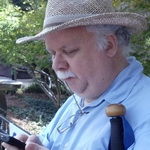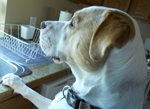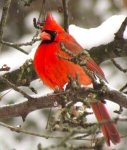I would appreciate any input regarding a trend in my data lately. To sum up, I use the BiPAP Auto SV to treat Cheyne-Stokes breathing. I am 100% compliant. For several months I have noticed that on many nights (1 or 2 nights per week) I will have a cluster of events during the first hour of sleep. When this happens, the IPAP pressure kicks way up. You can see it on this chart, which looks pretty typical of a night when this happens. Typically, I only get a cluster like this during the first 60 or so minutes of sleep, just like on this chart. The rest of the night looks fairly smooth. On the night of this chart, I was not lying awake for long; I fell asleep within 5 to 10 minutes, which is typical for me.
My doctor suggested I bump my EPAP pressure to combat these. I'm at an EPAP of 11 right now, up from 10. I get more considerably more leaks at 12, so have kept it at 11 for now. He does not accept the Periodic Breathing indications on this data, saying that a true sleep study is the only reliable indicator of these. He is only trying to combat any obstructive events with the pressure increase.
I would welcome any thoughts, suggestions or other observations.
Thanks,
Tony














